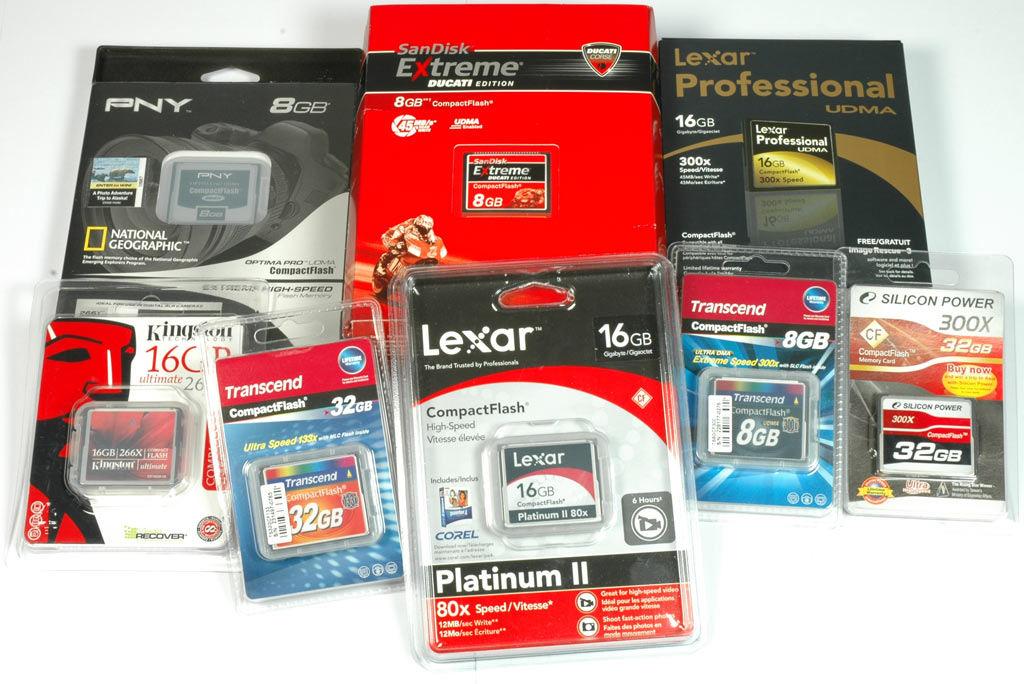Roundup: CompactFlash Cards For Professionals
Compact Flash Powerhouses Reviewed
We recently looked at 13 different high-end Secure Digital High Capacity (SDHC) flash memory cards that can be used for all sorts of consumer devices, such as prosumer digital cameras or video cameras, photo frames, car stereo solutions, and much more. However, the professional world still relies on CompactFlash (CF) memory cards, which deliver much more performance thanks to built-in controller logic. When we requested SDHC card samples for our earlier roundup, we also asked for the very best CF cards. Here are eight of them.

CF Is Professional Storage
An increasing number of digital camera product lines have been modified to work with SD or SDHC memory cards instead of CF cards. The reasons for this shift include physical requirements, which speak against the larger CF format, but also cost considerations. CF cards are more expensive than SD/SDHC cards due to the fact that an UltraATA interface is part of the memory card, while SD memory cards require a compatible controller to operate them. For this reason, the CF format has experienced a noticeable decline, which certainly has had a negative impact on prices. CF cards are much more expensive than SDHC devices today when you look at them on a price-per-gigabyte basis, and especially when looking at high end parts. Despite this, all professional devices that require fast and small random access storage devices use CompactFlash memory cards.
CF Is Flexible
To devices that use them, CompactFlash cards appear as IDE/UltraATA devices, which makes them rather easy to access: the host device simply has to create a file system such as FAT32 and you are ready to go. This also means that it is possible to plug a high-end 32 GB CompactFlash card into an old camera, while SDHC memory cards do not work in cameras that were not designed specifically to support them. UltraATA, as old as it is, still works just fine, and multiple revisions of the CF standard have made sure that the standard is kept up to date. Today’s capacity limit is 32 GB, but the first 64 GB products have already been announced.
CF Is Fast
The performance of SDHC cards is typically limited by the accessing device. In our case, the bottleneck was a USB 2.0 card reader, which maxes out at approximately 20 MB/s. Other devices have so far failed to deliver better performance. Still, this is more than enough for most prosumer digital cameras and other applications, and the cards have not yet reached 20 MB/s write performance either.
Get Tom's Hardware's best news and in-depth reviews, straight to your inbox.
CF cards are much faster: the best product in this roundup reached almost 43 MB/s write throughput and 47 MB/s of read performance. We used a CompactFlash-to-SATA card reader to make sure that there was no bottleneck for the eight contenders from Kingston, Lexar, PNY, San Disk, Silicon Power and Transcend.
Current page: Compact Flash Powerhouses Reviewed
Next Page CompactFlash Basics